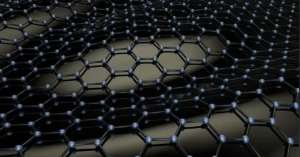Graphene in Hydrogen Storage Materials: Unlocking Clean Energy Potential
As the world shifts toward carbon neutrality and renewable energy, hydrogen has emerged as a promising clean fuel. It offers zero-carbon emissions when used in fuel cells and can store energy generated from renewable sources like solar and wind. However, one of the biggest barriers to the hydrogen economy is safe, efficient, and scalable hydrogen storage.

Traditional hydrogen storage methods—compressed gas cylinders or cryogenic liquid tanks—suffer from issues such as safety risks, high energy costs, and low volumetric efficiency. To overcome these challenges, researchers are exploring nanomaterials that can store hydrogen more effectively at the molecular level.
Among them, graphene stands out as a powerful enabler. With its large surface area, tunable chemical properties, and mechanical strength, graphene is proving to be an ideal candidate for next-generation hydrogen storage materials.
Why Hydrogen Storage Matters
Hydrogen is often called the fuel of the future, but its storage is far from simple:
-
Compressed Gas Storage: Requires high pressures (>700 bar), raising safety concerns.
-
Cryogenic Liquid Hydrogen: Needs storage at –253°C, which is energy-intensive.
-
Metal Hydrides: Offer chemical storage but are heavy and slow to release hydrogen.
For hydrogen to power cars, airplanes, and grid-scale storage, materials that can hold hydrogen safely, efficiently, and reversibly are essential.
This is where graphene-based nanomaterials come in.
The Properties of Graphene for Hydrogen Storage
Graphene’s unique structure—a one-atom-thick sheet of carbon atoms arranged in a honeycomb lattice—gives it several key advantages for hydrogen storage:
-
Extraordinary Surface Area: Over 2600 m²/g, enabling high adsorption capacity.
-
Lightweight: Contributes to high gravimetric hydrogen storage density.
-
Tunability: Functional groups or metal nanoparticles can be attached to graphene, improving hydrogen binding energy.
-
Porosity: Graphene aerogels and foams provide 3D structures for enhanced gas storage.
-
Stability and Recyclability: Retains performance over multiple hydrogen absorption–desorption cycles.
These features make graphene an excellent platform for designing hydrogen storage materials that are compact, safe, and efficient.
Mechanisms of Hydrogen Storage in Graphene
Graphene can store hydrogen through two primary mechanisms:
1. Physisorption
-
Hydrogen molecules attach to graphene surfaces via weak van der Waals forces.
-
Works best at low temperatures and high pressures.
-
High surface area and porosity increase storage capacity.
2. Chemisorption
-
Hydrogen atoms chemically bond with carbon atoms in graphene.
-
Provides stronger binding but may require more energy for release.
-
Hydrogenated graphene (graphane) is a key example.
By combining physisorption and chemisorption, graphene materials can potentially achieve DOE (U.S. Department of Energy) targets for hydrogen storage.
Enhancements Through Functionalization
Researchers have developed strategies to improve hydrogen storage in graphene:
-
Metal Decoration: Attaching metals like lithium, magnesium, or palladium to graphene enhances hydrogen binding.
-
Doping: Nitrogen or boron doping increases active sites for hydrogen adsorption.
-
Porous Structures: Graphene foams and aerogels provide high pore volume for hydrogen uptake.
-
Hybrid Composites: Combining graphene with metal-organic frameworks (MOFs) or carbon nanotubes (CNTs) creates synergistic storage platforms.
These approaches improve storage capacity, reversibility, and operational temperature ranges.
Applications of Graphene in Hydrogen Storage
1. Fuel Cell Vehicles
Graphene-based hydrogen tanks could enable lightweight, compact, and safe storage systems for cars, buses, and even trains.
2. Aerospace and Aviation
Lightweight graphene composites are ideal for hydrogen storage in aircraft and drones, where every kilogram matters.
3. Portable Power Systems
Graphene hydrogen storage materials could power portable fuel cells for military, outdoor, or emergency applications.
4. Renewable Energy Storage
Hydrogen stored in graphene materials can serve as a long-term storage medium for solar and wind energy, stabilizing grids.
Benefits of Graphene Hydrogen Storage
-
High Storage Density – better volumetric and gravimetric capacity than conventional tanks.
-
Safety – reduced risks compared to high-pressure compressed hydrogen.
-
Lightweight – crucial for transportation applications.
-
Reversibility – hydrogen can be absorbed and released repeatedly.
-
Scalability – potential for integration into large-scale energy systems.
Case Studies and Research Highlights
-
University of Manchester: Demonstrated hydrogen adsorption in graphene oxide with improved efficiency via chemical functionalization.
-
Chinese Academy of Sciences: Developed graphene-metal composites achieving enhanced hydrogen uptake at room temperature.
-
DOE Research Programs: Investigating graphene hybrids with MOFs for meeting hydrogen storage performance targets.
These findings highlight graphene’s real-world potential for hydrogen storage systems.
Market Potential
The global hydrogen storage market is projected to surpass USD 25 billion by 2030, fueled by hydrogen fuel cells, EVs, and renewable energy storage. At the same time, the graphene market is expected to grow rapidly, with energy storage being one of its fastest-growing application sectors.
By merging these trends, graphene-based hydrogen storage materials could capture a major share of the clean energy economy.
Challenges and Considerations
-
Storage Capacity: Current graphene-based systems still fall short of DOE hydrogen storage targets.
-
Temperature and Pressure Conditions: Many systems require cryogenic or high-pressure conditions.
-
Cost of Graphene Production: Large-scale, affordable production is essential.
-
Standardization and Safety: Commercial adoption requires strict testing and regulatory approval.
While challenges remain, ongoing research is steadily addressing these limitations.
Future Outlook
The future of graphene hydrogen storage looks highly promising. Key directions include:
-
Hybrid Materials: Graphene combined with MOFs, CNTs, or polymers for optimized performance.
-
Room-Temperature Storage: Developing graphene systems that store hydrogen efficiently under ambient conditions.
-
Large-Scale Production: Cost-effective graphene synthesis methods for industrial applications.
-
Integration with Fuel Cells: Direct coupling of graphene hydrogen storage with next-gen fuel cells.
With continued innovation, graphene could be a cornerstone of the hydrogen economy, enabling safer, denser, and more practical hydrogen storage solutions.
Hydrogen is a clean, versatile fuel with massive potential—but storage remains its biggest hurdle. Graphene offers a breakthrough pathway, thanks to its high surface area, tunable chemistry, and lightweight nature. By enabling safe and efficient hydrogen storage, graphene could accelerate the adoption of fuel cell vehicles, renewable energy storage, and portable power systems.
While technical challenges remain in capacity, cost, and scalability, progress in graphene research suggests a bright future where graphene hydrogen storage materials help power a carbon-neutral world.

